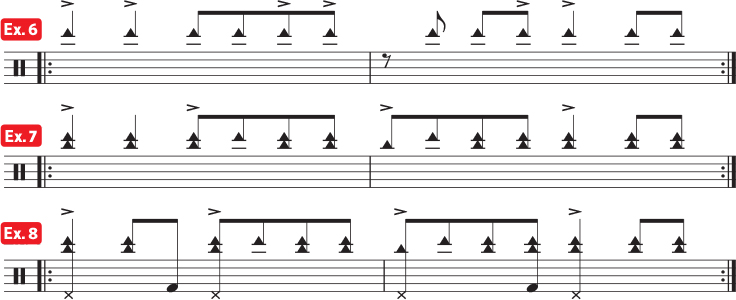BY BRIAN ANDRES | FROM THE SPRING 2019 ISSUE OF DRUM
This lesson is based around a rhythm that hails from Cuba known as the “bongo-bell,” named as such because it is usually performed by a bongo player when he or she picks up a cowbell. On the drum set, it’s commonly played on a cowbell but can also be played on a ride cymbal. This two-bar pattern has strong accents on the 1 and 3 of both measures (Ex. 1).

The pattern is complementary to another Cuban rhythm, the clave. By playing both rhythms together in a 2/3 clave direction, you get a feel for how they complement each other (Ex. 2).

Once you’re comfortable with this, start the pattern on the second measure for a 3/2 clave groove. When you’ve mastered the rhythms with your hands, add a hi-hat with your foot on the 1 and 3 of each measure, along with the bass drum on the & of 2 (Ex. 3).

You can create another great groove by keeping the bongo-bell pattern and your feet the same while playing the snare drum on the 2, either as a backbeat or cross stick, and hitting the mounted tom on the 4 & (Ex. 4). For an added challenge, replace the hi-hat pattern of 1 and 3 with the clave (Ex. 5).

Another complementary rhythm to the bongo-bell pattern is the mambo-bell rhythm (Ex. 6). Usually played by two different percussionists, these rhythms can be adapted and played together on the drum set (Ex. 7). It’s important to keep the accents for both patterns in mind when combining them. To complete the groove we can add the hi-hat on the 1 and 3 and the bass drum on the & of 2 of each measure (Ex. 8). Remember that each pattern can also be started on measure two for a 3/2 clave direction.


